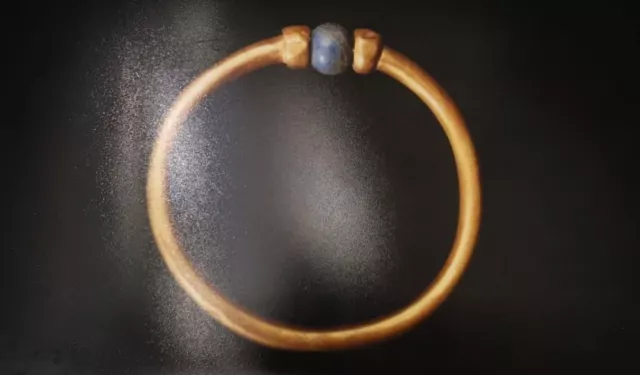A priceless ancient gold bracelet once buried with an Egyptian pharaoh has been stolen from Cairo’s Egyptian Museum before being allegedly melted down and sold for 180,000 Egyptian pounds ($3,700).
Police say a conservator from the museum’s own restoration team is at the centre of the scandal. She is accused of lifting the 3,000-year-old treasure from a locked safe and flogging it through a chain of gold traders in Cairo before it was melted down beyond recognition.
The Ministry of Interior announced Thursday that four individuals had been arrested in connection with the theft, including the member of the museum’s restoration team. The bracelet, which dates to the Third Intermediate Period of Ancient Egypt, vanished earlier this month as staff prepared artifacts for a major international loan to Italy.
The stolen piece was among 130 antiquities slated for shipment to Rome for the “Pharaohs’ Treasures” exhibition at the Scuderie del Quirinale. The showcase, opening Oct. 24 and running through May 3, 2026, marks one of Egypt’s largest overseas museum loans in recent years. The bracelet was reported missing from a locked conservation lab safe on Sept. 13.
In a statement, the ministry said the prime suspect removed the item on Sept. 9, during official working hours, employing what investigators termed a “distraction technique.” She then reached out to a silver trader she knew in Cairo’s Sayeda Zeinab district, who allegedly sold the bracelet to a goldsmith in the nearby Al-Sagha market for 180,000 Egyptian pounds (about $3,700).
The goldsmith, in turn, is said to have resold the artifact to a gold foundry worker for 194,000 pounds, according to the ministry's statement. Authorities believe the bracelet was melted down and fused with modern gold, destroying its ancient form and obliterating its historical significance.
The Ministry of Tourism and Antiquities said Tuesday it had filed formal charges and escalated the case to law enforcement and judicial authorities. Border and airport officials have been alerted, and a special audit committee was deployed to review the museum’s entire conservation inventory.
A photograph of the missing bracelet has been circulated to all antiquities units at Egypt’s ports, crossings, and customs inspections. The museum’s director described the object as a gold bracelet inlaid with a lapis lazuli sphere, part of King Amenemope’s tomb collection.
Amenemope reigned during Egypt’s Third Intermediate Period (c. 1069–664 BCE)—a politically fragmented era defined by decentralized rule and weakened palace authority.
The case has cast fresh light on the chronic vulnerabilities of Egypt’s museum system and the ongoing struggle to safeguard its cultural heritage from theft, trafficking, and irreversible loss.
